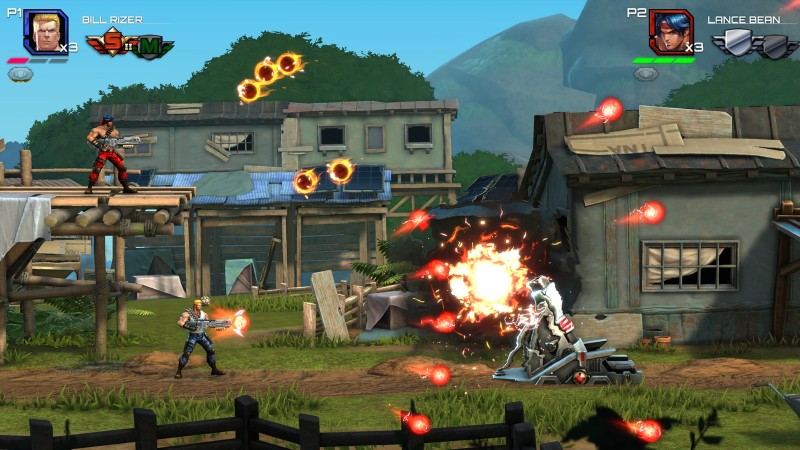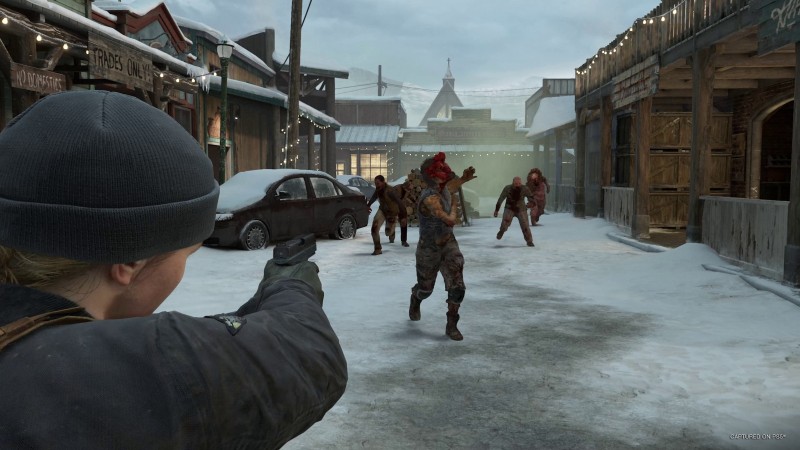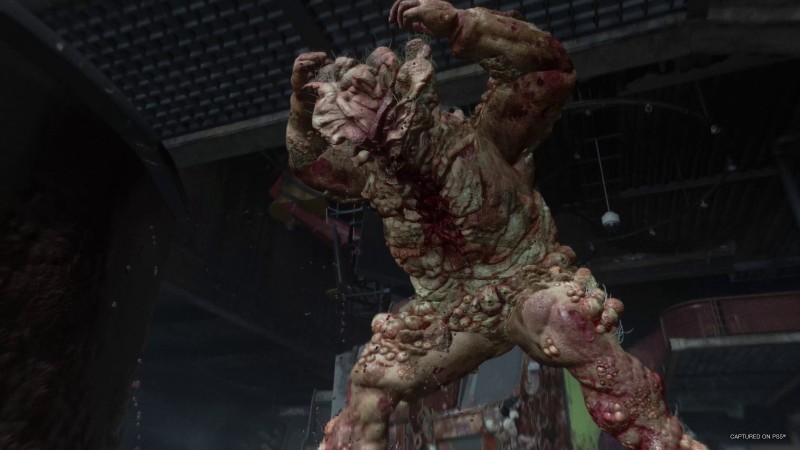…
A Beginner’s Guide to Data Warehousing
In this digital economy, data is paramount. Today, all sectors, from private enterprises to public entities, use big data to make critical business decisions. However, the data ecosystem faces numerous challenges regarding large data volume, variety, and velocity. Businesses must employ certain techniques to organize, manage,…
Contra: Operation Galuga Trailer Roll Calls The Six Playable Heroes

In September, Konami announced it was going back to Contra’s 2D roots with a sort of reimagining of the NES original dubbed Contra: Operation Galuga. The game, developed by Wayforward, features six playable heroes, and a new trailer runs down each one and what they bring to the table.
[embedded content]
The trailer also provides another look at Operation Galuga’s modernized run-and-gun action, which harkens back to the classics with up to four players working together to blast apart enemies. Operation Galuga serves as a reimagining of the first Contra game with a roster of heroes bringing the fight to the Red Falcon terrorist faction, which Konami breaks down below:
Bill Rizer: Field leader of the Contra unit, possessing exceptional physical strength, agility, and mental fortitude. Proficient in all manner of armaments and well-versed in military science.
Lance Bean: An expert marksman adept with machinery. Was active as a guerrilla fighter before being recruited into the Earth Marine Corps by Bill Rizer.
Ariana: A tremendously skilled warrior from the Galuga Archipelago. After her village was nearly wiped out by Red Falcon’s attack, she wages a one-woman war against the enemy forces.
Lucia: Deputy commander in the Earth Marine Corps and also a talented field operative. She is equally proficient at combat missions and covert intelligence.
Lt. Stanley Ironside: A veteran who leads an armored platoon in the GX Army. He wears a powered Hercules exosuit to supplement his already formidable combat skills.
Probotector: Autonomous training robots used by the Contra Unit. Utilizing cutting-edge tech, they are every bit as capable in the field as their human counterparts.
Each character can be bolstered with up to two perks purchased from an in-game shop using virtual credits (with Konami stating these are not microtransactions). Perks include respawn invulnerability or starting stages with a specific weapon.
Contra: Operation Galuga will feature a story campaign, arcade mode, and a 30-mission challenge mode. It’s slated to release early next year for PlayStation and Xbox consoles, Switch, and PC
AI and the Future of Work: Reskilling the Workforce in an Age of AI
AI is transforming the way we work, and it’s happening faster than you think. Over 100M people already use ChatGPT every week, and more than half of employees say they use AI tools at work. While there’s no question that AI will help certain types of…
Peter Wang, CEO & Co-Founder of Anaconda – Interview Series
Peter Wang is the CEO and co-founder of Anaconda. Prior to founding Anaconda (formerly Continuum Analytics), Peter spent 15 years in software design and development across a broad range of areas, including 3D graphics, geophysics, large data simulation and visualization, financial risk modeling, and medical imaging….
Elon Musk’s xAI Seeks Billion-Dollar Funding Boost
In a bold move that signals a significant shakeup in the artificial intelligence landscape, Elon Musk’s xAI, is on a mission to secure a substantial $1 billion in funding. Already on a promising trajectory, xAI has amassed nearly $135 million, as per a recent filing with…
The biggest CISO challenge in a new role (it’s not what you think) – CyberTalk

When assuming a new role, top CISOs continuously stay appraised of new threats and even proactively engage with emerging technologies. But even the most astute and technically talented of CISOs can bungle this one thing…
While CISOs often approach new roles with a deep understanding of external threats, CISOs have traditionally underestimated the threats within their own perimeter.
We’re not talking about malicious insider threats here – Rather, we’re referring to the lack of interest in, resistance to and sometimes, blatant dismissal of, cyber security concerns among staff.
One of the biggest challenges for CISOs in a new role is navigating the delicate network of internal relationships and existing organizational mindsets surrounding cyber security.
Navigating (social) networks
For some enterprises, continuous operational evolution is the normal state of business. In other words, the expectation is that things will change in the interest of improvement and stronger business results.
However, even in growth-friendly, future-looking environments, change cannot be forced; it must be approached in a way that authentically shows that change is in employees’ best interests.
The T-word
Another pervasive element undermining engagement around cyber security is lack of employee trust regarding the change-manager and the changes themselves.
To present an analogy, you wouldn’t blindly follow someone through the Himalayas if you didn’t think that they knew where they were going. By the same measure, organizational staff won’t follow your lead if they can’t clearly see your competence.
Addressing the challenge
To excel in a new role, start by building bridges. Establish open lines of communication among key stakeholders, proactively engage with employees, and develop partnerships across business units.
In turn, you’ll be able to not only better align cyber security initiatives with existing expectations, but you’ll likely see a higher degree of acceptance and follow-through when it comes to new security department requests.
Becoming a student of culture
To achieve even a modicum of effectiveness when it comes to the ‘human element’ within security, new CISOs also need to spend time evaluating the organizational culture.
CISOs need to conduct informal analyses of nuances that are liable to make security initiatives either wildly successful or extremely sluggish.
After accumulating these insights, CISOs can develop approaches that align with existing expectations, modus operandi and cultural norms, and thus, are more likely to be well-received than otherwise.
Selling security
When you finally do move forward with policy, procedural or other security-related changes that affect a significant number of employees, remember to explain the ‘why’ and connect the endeavor to employees’ well-being and that of the organization.
For example, explain that new procedures contribute to a secure work environment, protecting sensitive information (including all of the details that HR retains about each employee), safeguarding both personal and professional interests.
Tl;Dr:
At the beginning of a new tenure, the biggest challenge for CISOs is arguably navigating the internal organizational landscape.
By sussing out organizational dynamics and observing the psychology behind them, CISOs can better address the ‘human element’ and security at-large, enabling more effective management and mitigation of risks.
In cyber security, a CISO’s most effective ‘secret weapons’ may be establishing trust among stakeholders and employees, and ensuring that initiatives don’t come across as culturally insensitive or out-of-place.
For more CISO strategy insights, please see CyberTalk.org’s past coverage. Lastly, to receive timely cyber security insights and cutting-edge analyses, please sign up for the cybertalk.org newsletter.
Ukraine is Getting a Special HIMARS? – Technology Org
Earlier this month it was revealed that the latest American military aid package for Ukraine includes a single…
The Last of Us Part II Remastered Preview – A Hands-On Breakdown Of The Remaster’s No Return Roguelite Mode – Game Informer
Following in the footsteps of its predecessor, The Last of Us Part II is getting the big remaster treatment in January, over three years after it was released for PlayStation 4. This updated version leverages the PlayStation 5’s hardware with graphical bells and whistles like native 4K resolution, improved textures, and unlocked framerate. It also adds new interactive goodies, such as developer commentary and previously unplayable lost levels. But the centerpiece of the package’s new offerings is a new mode called No Return.
In this new roguelite adventure, players choose from one of 10 playable characters, from main stars like Ellie, Abby, and Joel to previously unplayable faces like Tommy, Dina, and Lev, to battle a randomized series of combat encounters. I traveled to Sony Interactive Entertainment’s office in San Mateo, California, to play several rounds of No Return and speak to the director of The Last of Us Part II Remastered, Matthew Gallant, to learn how and why Naughty Dog implemented this surprising addition.
My initial assumption was that No Return was an idea intended for the original release of The Last of Us Part II that didn’t make the cut. However, Gallant states the mode was conceived after Naughty Dog decided to update the sequel. “We’re like, okay, we knew we were going to be doing this next-gen upgrade and offering the PS5 improvements and the fidelity and the performance mode, haptics, and all that really great stuff,” says Gallant. “That was for sure going to be in The Last of Us Part II Remastered, but then we were thinking, ‘What else would be really great? What would surprise people, delight people, give them something to make this a really robust offering?’”
[embedded content]
Naughty Dog wanted something that took advantage of the game’s exceptional combat that had the same high stakes as The Last of Us Part II’s Grounded difficulty, in which players must restart the entire game if they die just once. It also wanted to challenge players to constantly change their tactics and behaviors; Gallant believes many players settled into their chosen playstyles and loadouts once they got deep into the story campaign. The run-based, randomized blueprint of the roguelite became the clear answer. “We thought that this roguelike mode [would] be a really great way to surprise players, get them thinking on their feet again, throw them into situations where they might be uncomfortable having to react or to plan on the fly,” says Gallant.
Upon starting a new run, I choose one of two available characters: Ellie or Abby. Each character has a playstyle and specialized traits. Ellie is classified as “Balanced,” meaning she’s well-rounded, while her three traits are gaining 50 percent more supplements, the ability to craft Molotovs (other characters must unlock this recipe), and two upgrade branches. Abby is a Brawler, meaning she hits harder, and her traits include a health regen that restores HP each time she performs a melee attack. Dina excels at crafting, based on how she’s able to repair the WLF radio in the story. Lev, who I unlock later, is stealth-focused, so he’s automatically equipped with his powerful and silent bow. His sister Yara’s trait allows Lev to accompany her as an AI companion at the expense of starting with only a basic firearm, meaning her upgrade path is longer by default.
I choose Ellie, and my run begins in the hideaway. This HQ takes different forms location-wise and has a workbench to upgrade weapons and a trading post to purchase new guns and tools from a randomized selection, which changes upon each visit. If you’re unhappy with what the trading post currently offers, you can reroll the selection by spending a small amount of currency. I begin with a pistol, a knife, and a couple of health packs. A corkboard displays the current run, a branching web of levels represented by Polaroid photographs that display any stipulations.

The first level’s match is Assault, which tasks me with defeating three waves of enemies. I can go loud, but I choose to pick them off quietly, my preferred tactic in the story campaign. I’m reminded of how good the combat feels after being away from it for three years. The action is brutal, and I find myself wincing all over again at the sickening sound effects as I pierce throats with my knife or cave in someone’s skull with a bat. And yes, human enemies still scream out the names of their fallen comrades (“No! Mike!”) in agony upon discovering my handiwork.
The Last of Us Part II’s unsettlingly grounded depiction of violence is juxtaposed by No Return’s more video game-y elements. Abby’s health regen trait means that health symbols explode out of enemies when she strikes them. Level modifiers can be goofy, such as one that makes all enemies invisible, detectable only by using listen mode, or by shining your flashlight to cast their shadows. Gallant, who worked on Part II’s combat in the original game, says Naughty Dog always valued keeping things grounded when it came to the series combat, but No Return’s non-canonical nature presented the opportunity for them to cut loose and get wild.
“We know our combat mechanics are really fun, we know our gameplay is really fun, [and we’re] trying to give that its own space to be fun and not quite as heavy as the main story,” says Gallant.
Between killing enemies, which range from human factions such as the WLF, Seraphites, and Rattlers to various types of infected, I scour the zones for crafting ingredients. Resource chests, which are highlighted with an indicator and appear in different places throughout a level, offer larger rewards for those brave enough to reach them.

After working my way through the web of zones, I eventually reach the endpoint: a boss battle. I’m pitted against a giant Bloater (along with a few Clickers), and, to my embarrassment, I’m killed after only a few minutes. Unfortunately, I didn’t get a chance to exact my revenge, though it wouldn’t be a guarantee that I could. Other bosses could appear instead, such as a Seraphite Elite or a Rattler Captain, which are new encounters not seen in the campaign.
My death means having to start a whole new run. It’s disheartening, but at least I know my path won’t unfold the same as before. Levels occasionally have mods such as adding a thick fog that makes it harder to spot enemies (and, in turn, concealing you better) or causing hazardous pustules of spores to rain from the sky. Sometimes, tripwires will be placed all over the arena. Some levels provide an AI companion to lend a hand. Using Ellie, I play one mission that pairs me with Dina for some tag team play. Other mission types include Hunted, which throws a never-ending barrage of enemies at players with the goal of surviving until the time limit expires. Certain levels have their nature obscured and labeled as mystery zones, meaning you have no idea what you’ll get until you play them.
“If you don’t make it out of the situation…knowing that the game’s going [to] be just rolling this entirely new random run at you, it’s going [to] be rolling all these new challenges, new combinations of stuff that you wouldn’t have expected,” says Gallant. “So [it] just makes coming back to the combat and running into new situations and new combinations just really exciting and really fun.”
A list of challenges provides additional objectives, and completing these unlocks new characters, outfits, mods, weapons, recipes, and more. For example, I unlock Lev by completing two levels as Abby. I also unlock Gambits, a feature that introduces a riskier set of challenges once per encounter for much greater rewards. Naughty Dog has ensured that No Return is regularly evolving and expanding the more time players put into it, which helps keep it fresh for the long haul.
A multitude of difficulty options means No Return can be as easy or hard as players make it. A Custom Run option even allows players to tailor their runs by choosing what mods, perks, and match types appear. Gallant believes that this flexibility in how players can mold No Return, along with the opportunity to play as fan-favorite characters, most of which were not playable before, offers enticing hooks to draw in fans who don’t traditionally play roguelites.
As a fan of The Last of Us Part II and roguelites in general, No Return is a fun blend of the two ideas that feels like a better fit than I expected. The evolving challenge, fun mods, and the tension of losing an entire run due to one mistake squeeze more juice out of the already enjoyable combat. Most of all, it offers an entertaining and substantial dessert to the meaty main course of the campaign (which Gallant recommends playing before jumping into No Return). I’m not sure if I’m ready to endure The Last of Us Part II’s emotionally taxing narrative again, so I’m glad No Return lets me enjoy the gameplay side of things without that stress.
The Last of Us Part II Remastered launches on January 19 for PlayStation 5.
Overcoming the ‘last mile problem’ in knowledge management – AI News
The concept of the “last mile problem” is widely recognised across various industries as the challenges faced in the final stage of delivering services or products from a central system to the end user’s location. Although typically associated with telecommunications and transportation, its application extends far…
